- Joined
- Jun 17, 2021
- Messages
- 3,181
- Points
- 588

Just ignore the cross out lines glitch. Don't know how I did that, but, oh well... 
 |
As a way to introduce our brass coins to the community, we will raffle off a free coin during the month of August. Follow link ABOVE for instructions for entering. |
 |
 |
The beloved Ships in Scale Magazine is back and charting a new course for 2026! Discover new skills, new techniques, and new inspirations in every issue. NOTE THAT OUR FIRST ISSUE WILL BE JAN/FEB 2026 |
 |



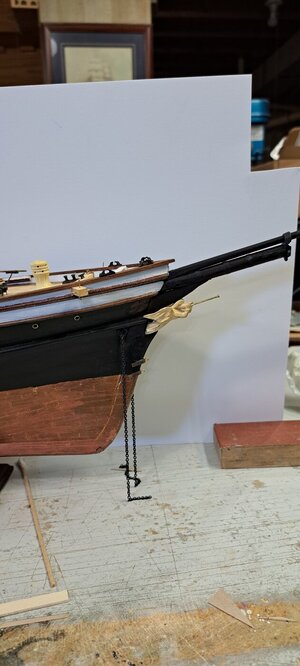
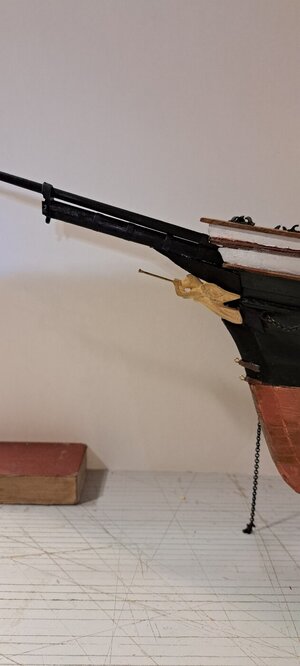
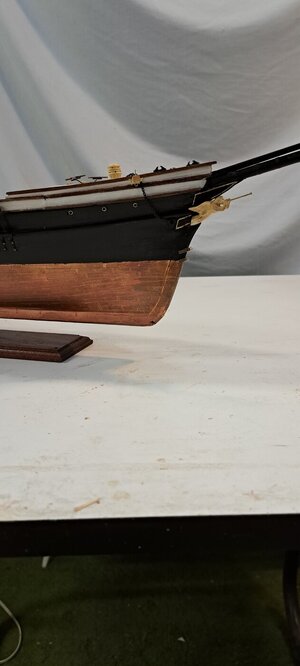
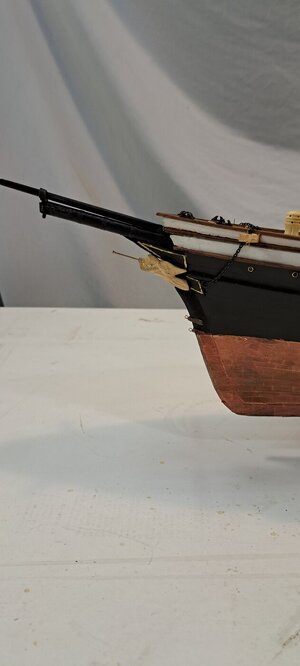 allowing the figurehead to stand alone for the decorative element. I kind of like all black. To me the gold looks like an afterthought. Opinions?
allowing the figurehead to stand alone for the decorative element. I kind of like all black. To me the gold looks like an afterthought. Opinions?


Good morning Peter. It looks good to me. Maybe a little aging on the gold will make it blend in some more. Cheers GrantI added the naval hoods and the figurehead. I tried extending the stem, raising the figurehead closer to the underside of the bowsprit. But the whole thing looked disproportionate and forced. I got six thumbs up and (and a little love) for the mockup, so I went with that arrangement. My hands are too shaky for the filigree, so I just outlined the naval hoods. I'm not sure I like that as opposed to all black andView attachment 456883View attachment 456884View attachment 456885View attachment 456886 allowing the figurehead to stand alone for the decorative element. I kind of like all black. To me the gold looks like an afterthought. Opinions?



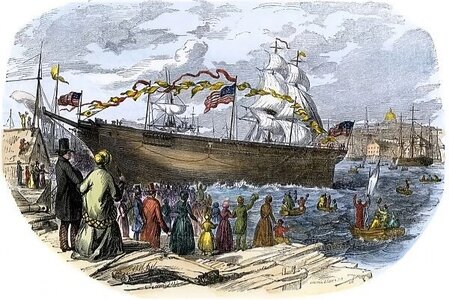
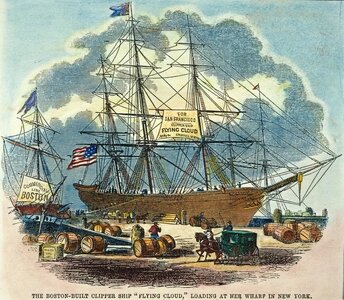
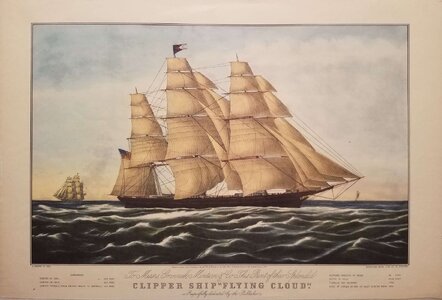
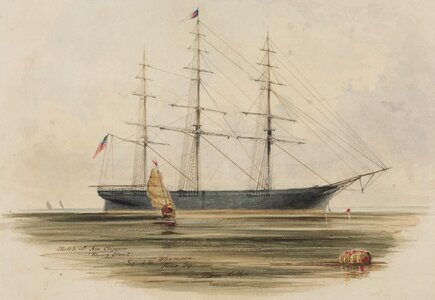
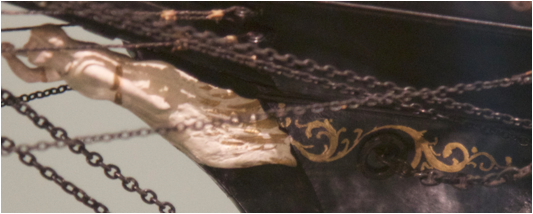









If you don't mind, let me add my 2 cents. I live near Mystic Seaport Museum, which includes a museum of figureheads. I have toured many times and have never seen a gold or black figurehead. They tend to be painted in "life-like" colors. Have you considered this approach?I added the naval hoods and the figurehead. I tried extending the stem, raising the figurehead closer to the underside of the bowsprit. But the whole thing looked disproportionate and forced. I got six thumbs up and (and a little love) for the mockup, so I went with that arrangement. My hands are too shaky for the filigree, so I just outlined the naval hoods. I'm not sure I like that as opposed to all black andView attachment 456883View attachment 456884View attachment 456885View attachment 456886 allowing the figurehead to stand alone for the decorative element. I kind of like all black. To me the gold looks like an afterthought. Opinions?

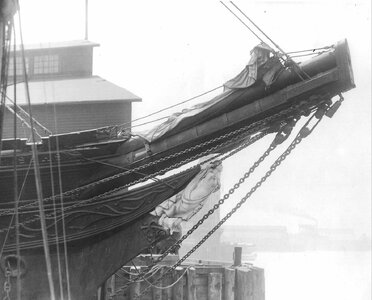

@WilliamM Bill, Mystic Seaport used to have a fascinating world class art Gallery which is now unfortunately closed. The original curator who began this gallery is a great guy named J Russell Jinishian. I met him once a few years ago at his new Maritime Art Gallery in Stonington, just a short distance beyond Mystic.If you don't mind, let me add my 2 cents. I live near Mystic Seaport Museum, which includes a museum of figureheads. I have toured many times and have never seen a gold or black figurehead. They tend to be painted in "life-like" colors. Have you considered this approach?
Bill

The molding terminating at the angel's wingtip is the leading edge of the plank shear. Is this where you mean paint the gold pinstripe? the seam where the molding joins the adjoining plank would best line up with the stripe coming down from above the angel on the bottom edge of the naval hood above her. I can paint it, take a picture and you can give mePeter,
I don't know how to use photoshop to illustrate on a computer, so I'll describe it instead.
There are three gold lines. The lowest is the cutwater. The second is the upper line of the cutwater combined with lower line of the naval hood. The uppermost line, representing the upper edge of the Naval hood, just below the bowsprit and the brown molding now ends at the tip of the angel's wings. That highest gold line would look better if it extends to just above the anchor hawse hole, where the anchor chain exits. By doing that, you'll give the impression of a longer naval hood which will make the large size of the figurehead appear to be smaller. It will enhance the symmetry of the entire bow. Once again, if you look at this starboard Glory of the Seas bow pic, it might help you to visualize this arrangement.
View attachment 457028
 or
or .
.